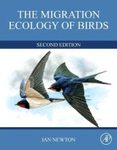By: Gerald A Schneider(Author)
728 pages, 243 colour & 127 b/w illustrations, 7 tables
![Brain Structure and Its Origins Brain Structure and Its Origins]()
Click to have a closer look
About this book
Customer reviews
Biography
Related titles
About this book
This introduction to the structure of the central nervous system demonstrates that the best way to learn how the brain is put together is to understand something about why. It explains why the brain is put together as it is by describing basic functions and key aspects of its evolution and development. This approach makes the structure of the brain and spinal cord more comprehensible as well as more interesting and memorable. Brain Structure and Its Origins offers a detailed outline of the neuroanatomy of vertebrates, especially mammals, that equips students for further explorations of the field.
Gaining familiarity with neuroanatomy requires multiple exposures to the material with many incremental additions and reviews. Thus the early chapters of Brain Structure and Its Origins tell the story of the brain's origins in a first run-through of the entire system; this is followed by other such surveys in succeeding chapters, each from a different angle. The book proceeds from basic aspects of nerve cells and their physiology to the evolutionary beginnings of the nervous system to differentiation and development, motor and sensory systems, and the structure and function of the main parts of the brain. Along the way, it makes enlightening connections to evolutionary history and individual development. Brain Structure and Its Origins can be used for advanced undergraduate or beginning graduate classes in neuroscience, biology, psychology, and related fields, or as a reference for researchers and others who want to know more about the brain.
Customer Reviews
Biography
Gerald E. Schneider is Professor of Neuroscience in the Department of Brain and Cognitive Sciences at MIT.
By: Gerald A Schneider(Author)
728 pages, 243 colour & 127 b/w illustrations, 7 tables
"Brain Structure and Its Origins provides an evolutionary and very interesting perspective of the organization and function of the vertebrate nervous system from lamprey to man."
– Sten Grillner, Professor, Nobel Institute for Neurophysiology, Karolinska Institutet
"Brain Structure and Its Origins by Gerald Schneider is different from any other book on the topic. Its strengths lie in clear, comprehensive, and sometimes provocative explanations of the complex anatomy and functions of the brain, combined with a historical view of the field and the people who developed it. The great variability in how brains are organized and function across species is included and explained in terms of modes of brain development and evolution. Each chapter makes you want to learn more; chapters are followed by suggested readings that range from early landmark studies to the best of recent reviews. This is the book that would best introduce students at any level to the exciting field of neuroscience, and serves as an excellent review for the experienced investigator."
– Jon H. Kaas, Distinguished Centennial Professor of Psychology, Vanderbilt University
"This is a well-written general book on brain anatomy and function, which includes numerous useful pictures and clear diagrams to explain brain organization in terms of development, evolution and function. It is not only valuable for students interested in the field, but also for neuroscientists and neurologists in general."
– Javier DeFelipe, Neuroscientist, Cajal Institute


































